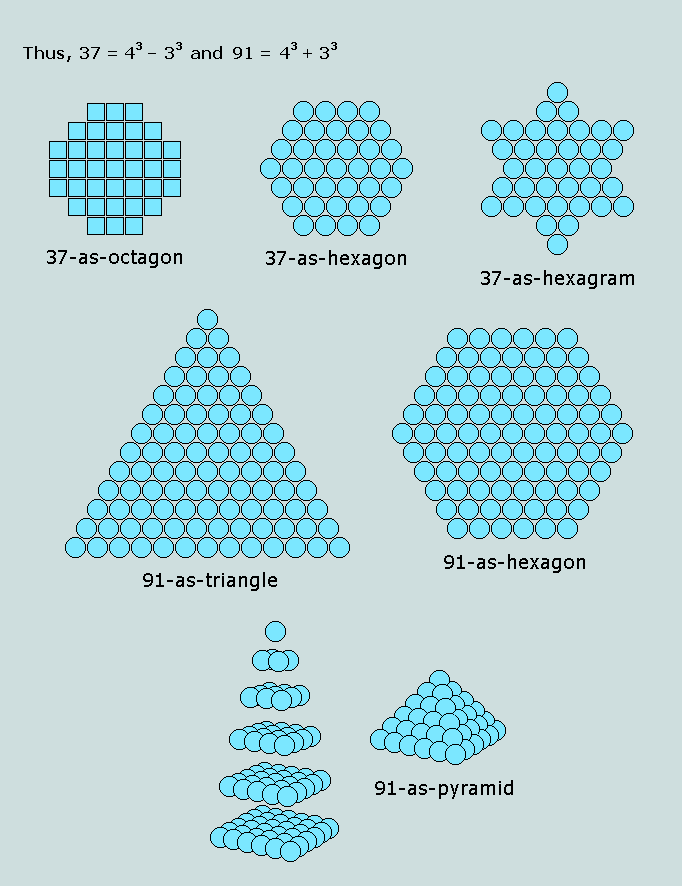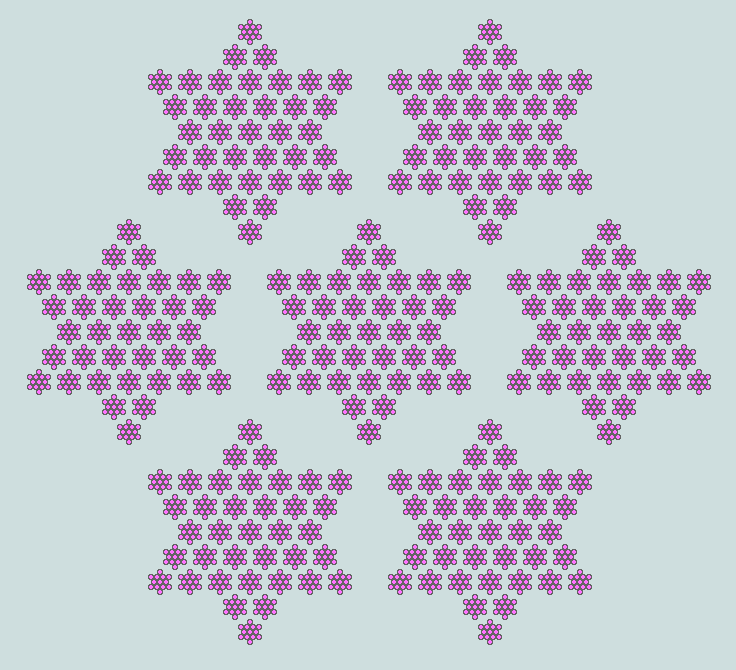
The Trifigurates
The kind of figurate numbers with which this analysis deals are those capable of filling a 2-D or 3-D symmetrical frame when represented as collections of uniform counters - circles or spheres, squares or cubes, as appropriate. Typical are the triangulars, the squares (and their distorted equivalents, the rhombi), the cubes, the hexagons and hexagrams.
Occasionally, a given number may be expressed geometrically in two distinct ways - as, for example, 64, which is both a square (i.e. 8.8) and a cube (i.e. 4.4.4). These are logically termed bifigurate numbers. In just two instances a number may be realised in three distinct ways. These trifigurates are 37 and 91 - portrayed in the accompanying figures, where unit squares, circles and spheres are called upon to function as constructional units.
Clearly, this pair of numbers is rather special for these features are absolutes - completely independent of any system of numeration devised by man. Yet we observe that when expressed as decimal objects, their digits sum to 10 - base or radix of the familiar decimal system. However, they are also related independently in that they are, respectively, the difference and sum of two cubes.

Both 37 and 91 feature in the opening Hebrew words of the Scriptures: the former as abundant factor in the opening verse; and the second, a factor of 3003 - sum of the first 8 words.
Again, since 91 = 7.13 = 2nd numerical hexagon x 2nd numerical hexagram, the product 37.91 = 7.13.37. This can be represented pictorially as a hexagon of stars of stars, as follows:

Observe that each of the 7 large stars comprises 13.37, or 481, counters. And since 481 is the sum of God (= 86) and heaven (=395) - i.e. words 3 and 5 of Genesis 1:1) - this result is worthy of close attention.
Vernon Jenkins MSc
2006.12.20